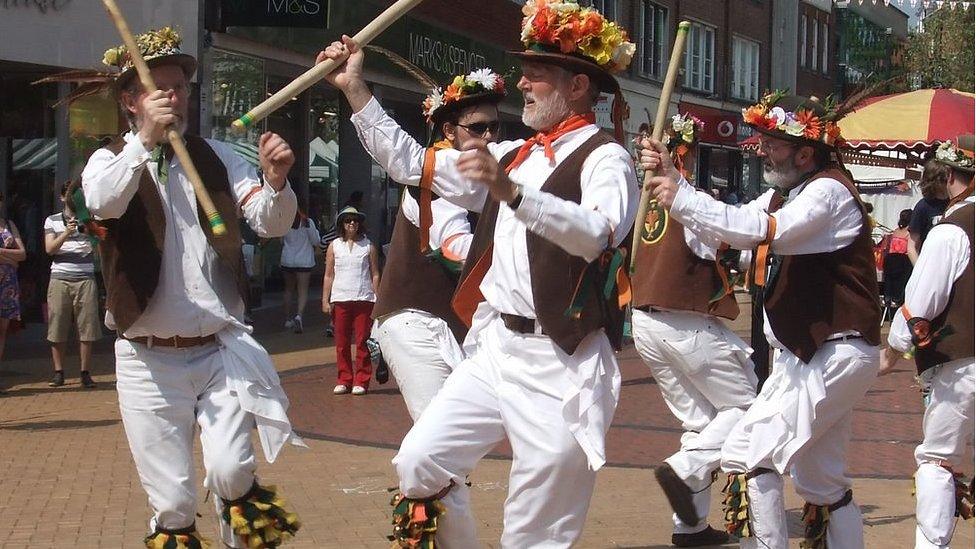Hankies and sticks: Why do people take up Morris dancing?
- Published
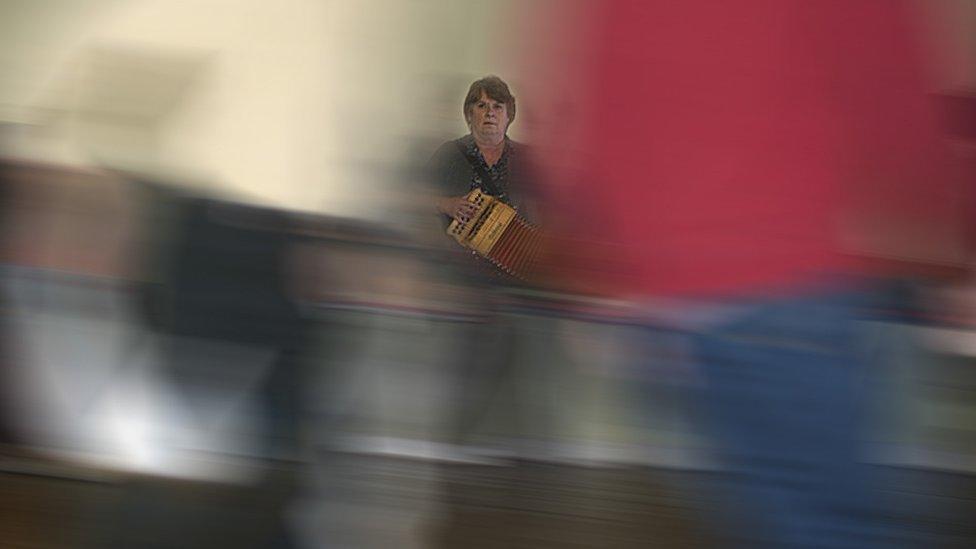
Melodeon player and club bagman Celia Kemp provides the music for the Morris men to practise their moves to
Last month the BBC told how a long-standing Morris group feared a dearth of "fit, mildly eccentric men" would force it to fold. Luckily men recognised themselves as both fit and quirky and helped avert a crisis. But what is the appeal of Morris dancing?
The annual rhythms of Morris dancing closely resemble cricket.
Yes, Morris groups put on the occasional display during the cold dark months of winter, but its seasonal home is the summer.
Winter is the "indoor season", a time for perfecting routines wearing informal attire, away from public view.
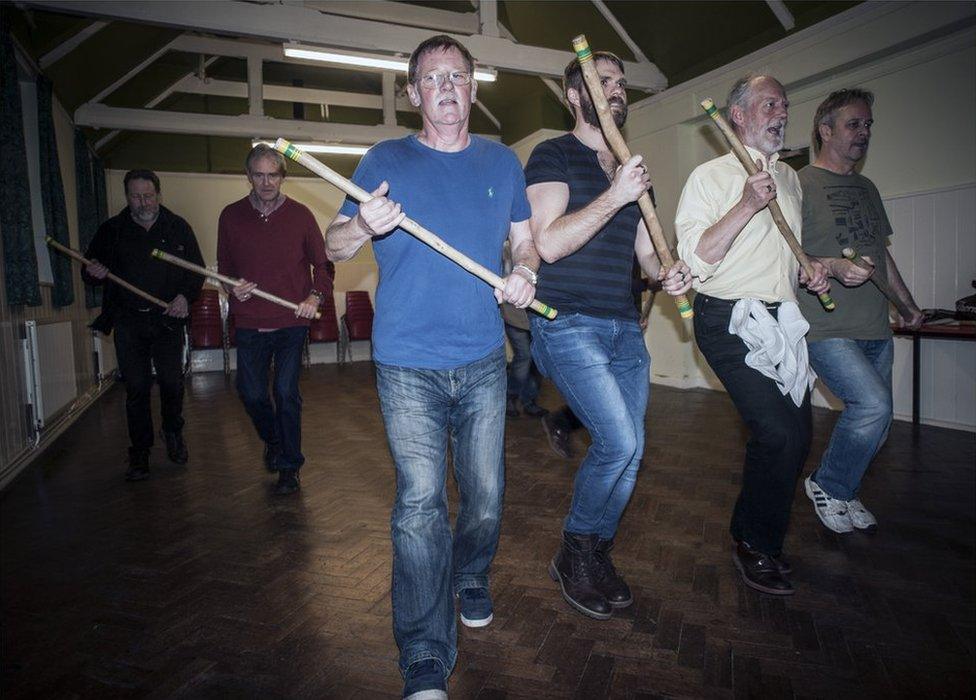
The Chelmsford group invited BBC News for a behind-the-scenes look at the curious world of off-season Morris dancing
The Chelmsford Morris group invited the BBC in for a behind-the-scenes look to see what makes its devotees tick.
Given the "eccentric" tag was applied to members by the club's own bagman Celia Kemp, you might be expecting a cast of Willy Wonka types.
You'd be wrong. Almost.

The dances
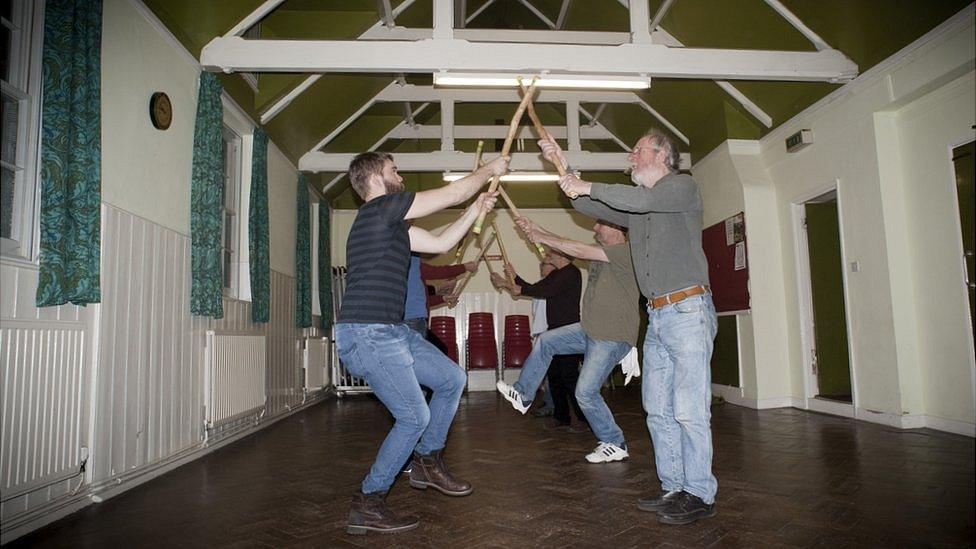
The men of the Chelmsford Morris group practising their skills in a church hall
"There are hundreds of dances in different styles," says Kieran Fitzgerald, the Chelmsford club's "squire" (chairman) and longest continuous serving member.
"We do Cotswold Morris, which is the one most people recognise as Morris dancing."
Most of the dances, which originate from Gloucestershire and Oxfordshire, involve either six or eight men who dance with handkerchiefs or sticks.
They include one called the Beaux of London City (Adderbury) which, I am told, could well be a secretly subversive dance that makes fun of the upper classes.
The women of Chelmsford Morris do North West Morris, which originates from Lancashire and Cheshire, and involves dancing in clogs.
Unlike some clubs, the group does not perform wearing black face paint.

Peculiar words
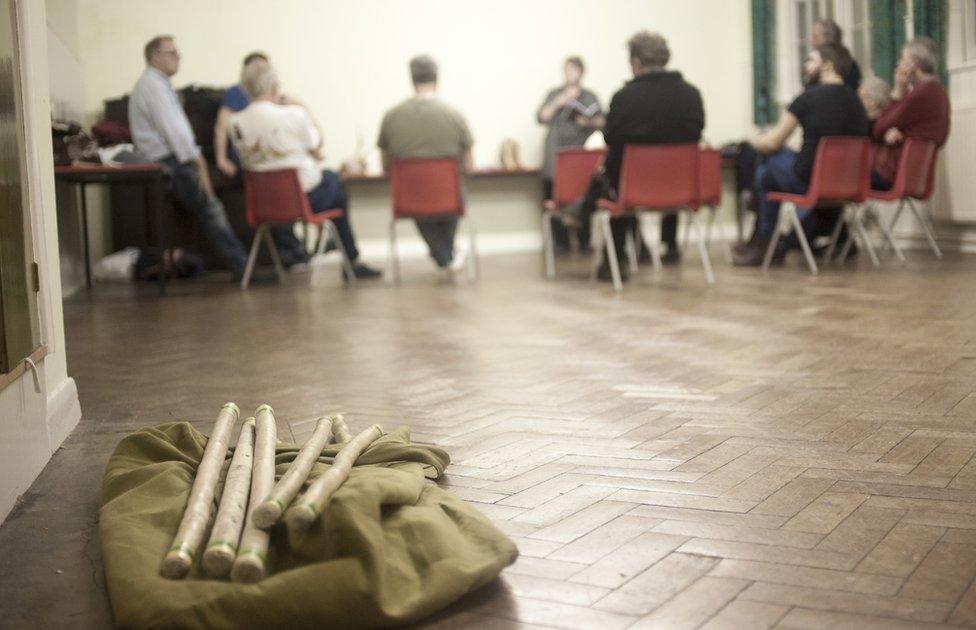
Members of the club gather for the 'bagging' session
As mentioned above, Celia is the club's "bagman".
After about an hour of dancing everybody suddenly stops and pulls up a chair to form a semicircle around her.
This, I learn, is the start of "bagging".
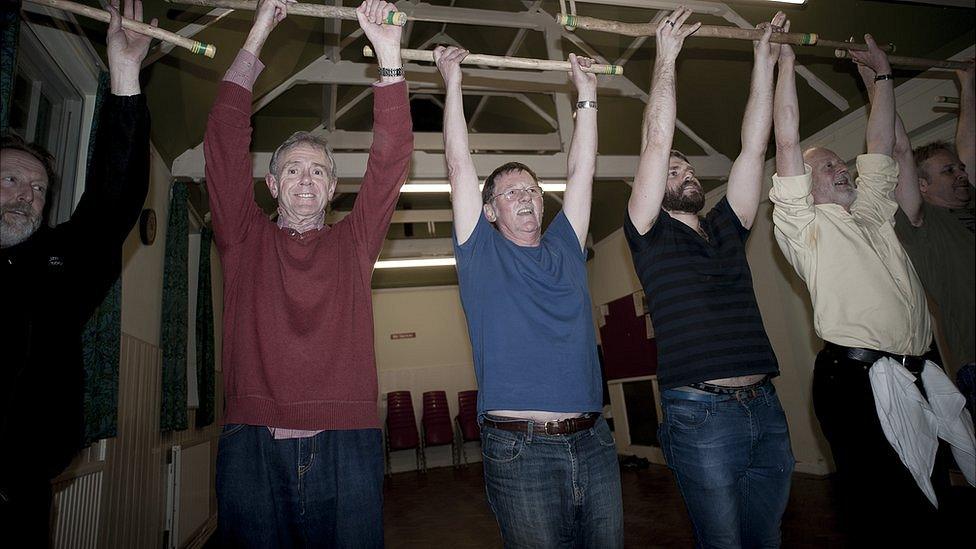
Ockles and bagging - welcome to the curious language of Morris
Bagging is the reading out of any announcements pulled from Celia's bag.
Of course, this being modern times, Celia also produces a regular "E-bagg" - an email newsletter.
Another word which caught me off guard was "ockleback". It means, they say, moving backwards while facing forward. Celia suggests "ockle" might have something to do with "ankles".

The importance of hats
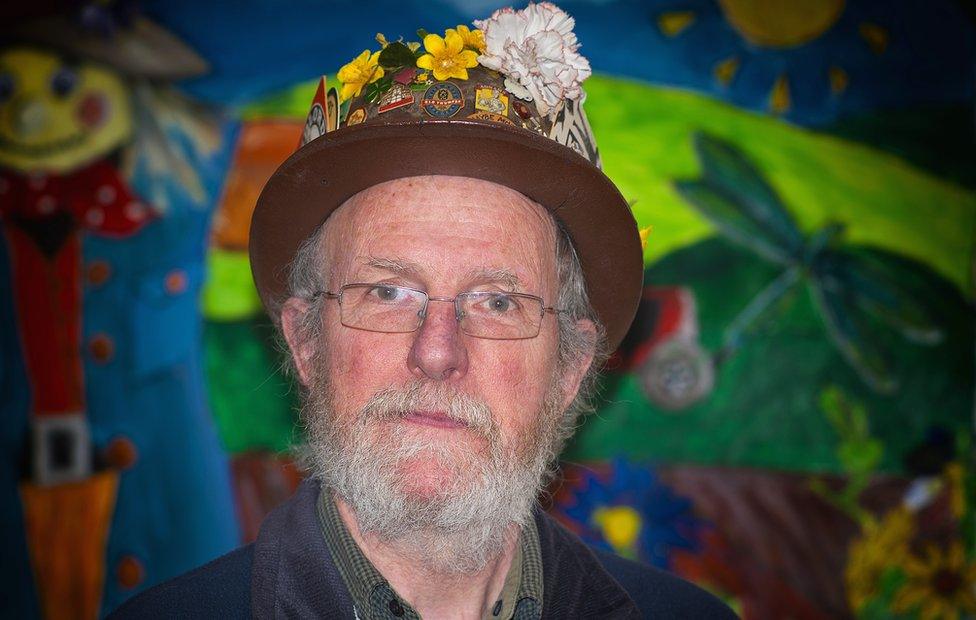
Kieran Fitzgerald's hat tells the story of his Morris dancing career through badges, beer mats and flowers
Morris men wear matching uniforms for public performances.
Their individuality is expressed through their headwear.
"It is the hats where our personalities come out," says Mr Fitzgerald, who said he got into Morris following a marital break up.
"I have always been interested in folk music and had seen Morris dancing. Years later, my marriage broke and I looked at joining a Morris team and I found Chelmsford was very friendly."
His own hat bears a healthy bloom of flowers, badges, beer mats and pheasant feathers which, he says, tell the story of places danced and beers enjoyed.

Oh yes, the beer
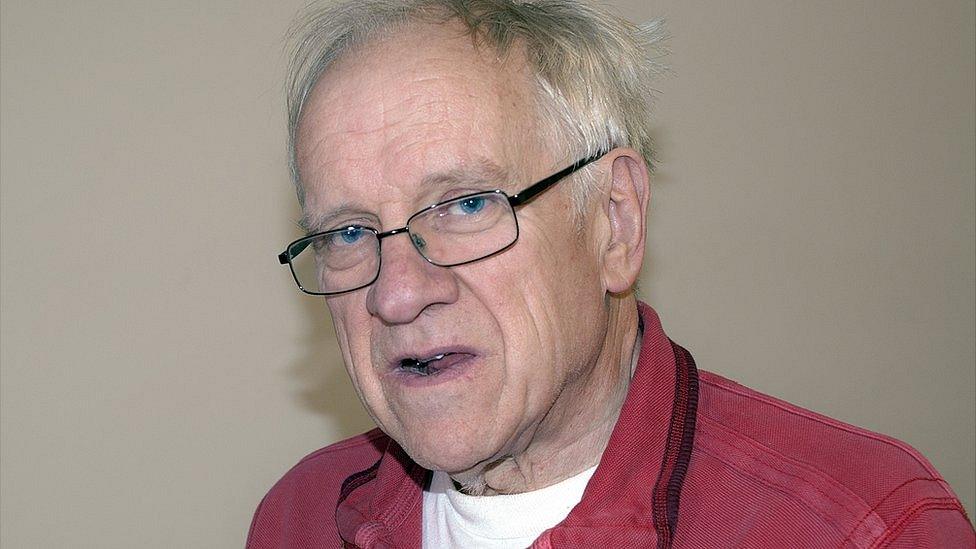
Colin Penney joined members for post-dance beers before signing up to join
Few clubs take pub visits as seriously as Chelmsford Morris. Almost without exception, members have a passion for good ale.
Colin Penney has been a member for three years.
He joined thanks to his wife Jan, a member with 10 years behind her. He would drive her to sessions and stay for the post-dance pub visits.
The crunch moment came when the club announced it was sometimes short of men.
"I felt slightly embarrassed knowing they were short and that if I joined I could help them out. So I joined. I enjoy it - they are a good crowd."

In the blood
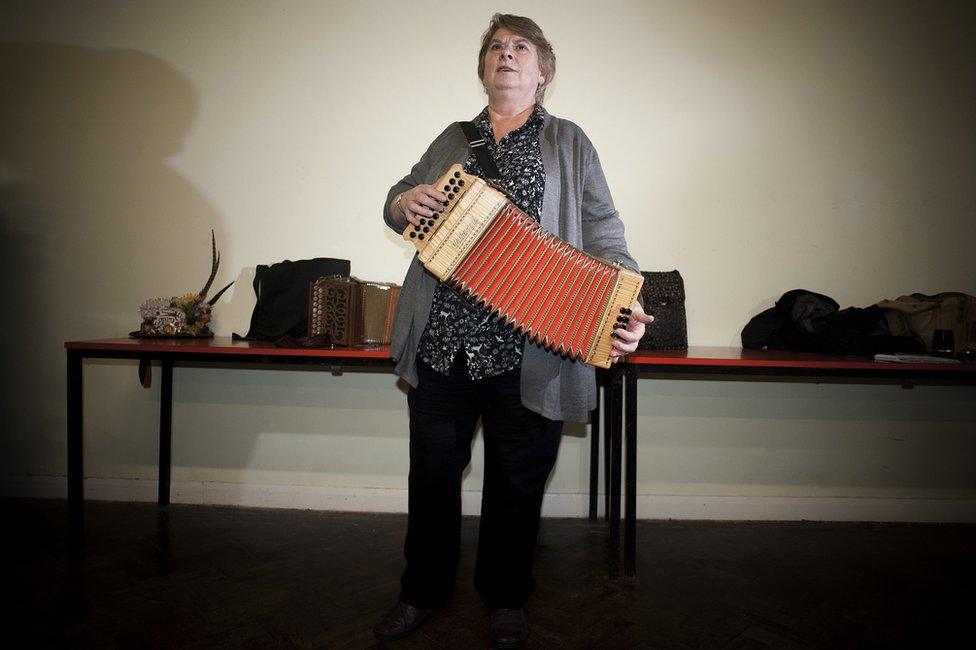
Bagman Celia Kemp was brought up by folk-music loving parents
"I am second generation," says Mrs Kemp. "My parents were folk dancers before I was born so I was brought up with folk music.
"I had a melodeon when I was 16 years old and about 14 years ago I got together with some people and started to learn how to play it properly.
"I got into Morris because it just seemed very familiar with the whole folk world really. I don't dance, I just play. I could not do what our women do.
"For me Morris is not just dancing but part of a much wider folk culture. That's the attraction."

Body parts

Peter Kemp had a hip replacement 10 years ago. It is still going strong
Morris-related injuries are not uncommon.
I met members with shin injuries, sore hands and joint replacements.
Peter Kemp, who returned to the world of Morris after many years in sword dancing, had a hip replacement just over a decade ago.
"People who have been doing it all their lives are likely to suffer in their knees and ankles. As for my hip, it is still going strong."
But he would not give up Morris for the world.
"When we go out, we go out as a kind of large family," he says.

New blood
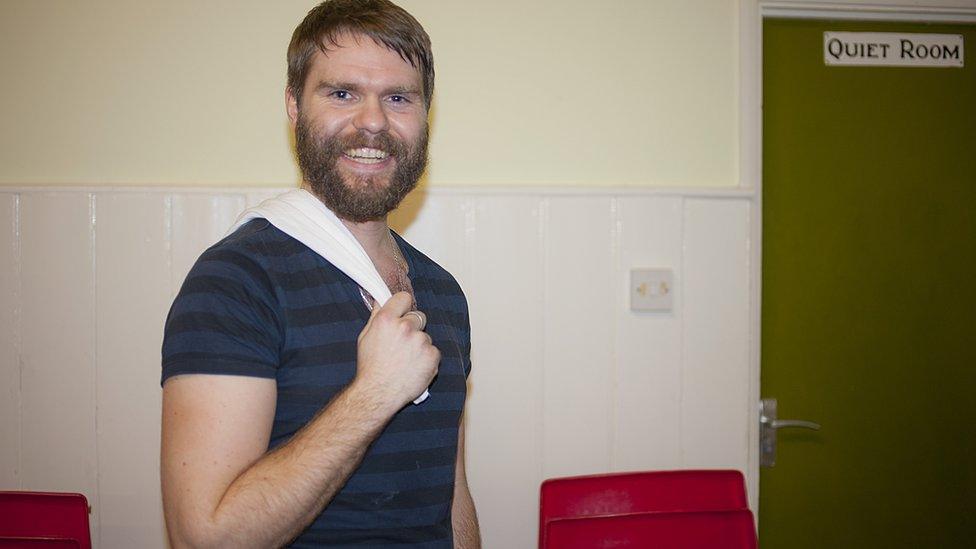
Matt Barlow, 30, joined after hearing somebody making fun of Morris dancing on the radio
Aged 30, Matt Barlow is both the club's youngest and newest member.
He joined after hearing Morris dancing being berated on radio.
"I joined as a bit of a protest against what I heard," he said. "And then there are the pub visits as well.
"I am really enjoying it, they are a grand bunch of lads." He has yet to meet the club's female group.
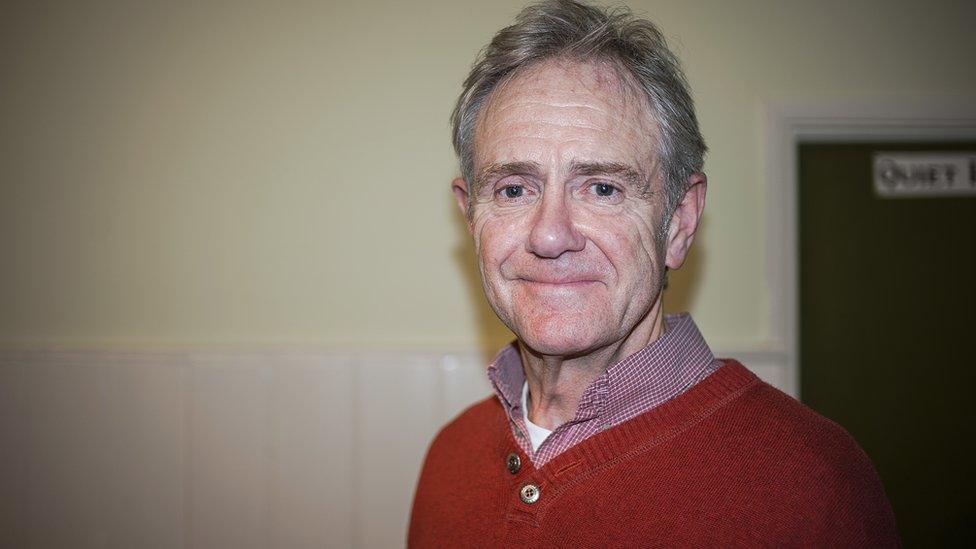
Dave Moss heard about the Chelmsford club's plight and decided he wanted to join to prevent it folding
"I had never ever considered Morris dancing until recently," says fellow newbie Dave Moss.
"I heard the club was short of men and it struck me they were in danger of closing and losing an age-old tradition.
"I thought I would give it a go and have thrown myself in at the deep end."
- Published21 January 2017
